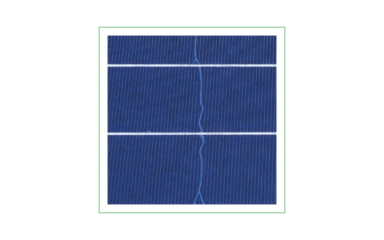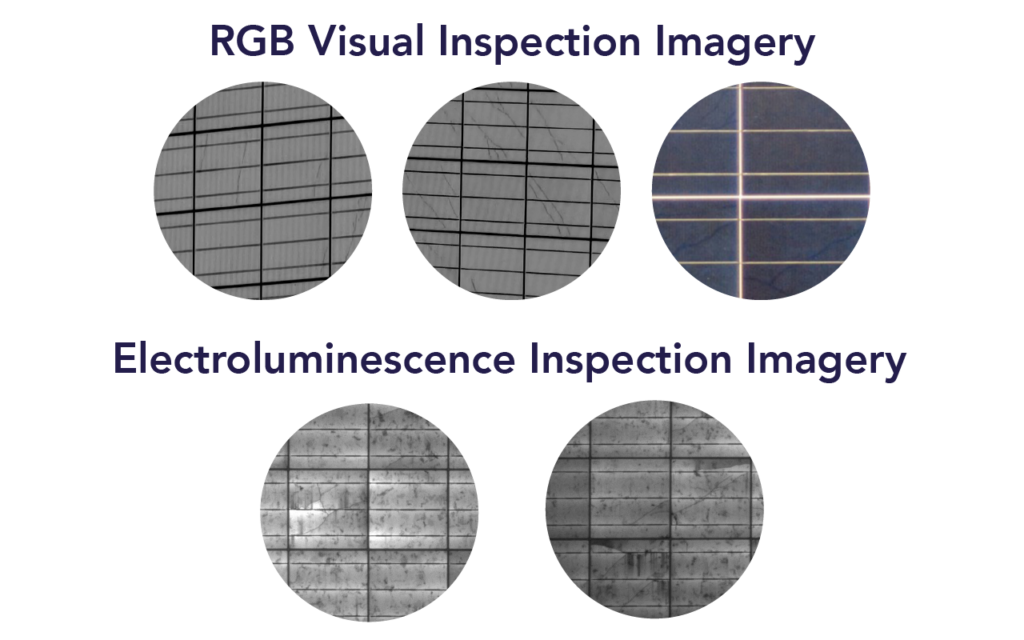Unveiling the impact of Snail Trails on PV Modules
23/11/2023
As solar assets age, an emerging concern is the development of snail trails on PV modules across many assets. While these trails don’t immediately indicate power loss, there’s worry that over time, microcracks along these trails could lead to substantial power reduction. This blog post delves into the world of snail trails.
What Are Snail Trails on PV modules?
According to research, a snail trail is a visible discolouration of the silver grid fingers on silicon solar cells. First observed in Southern Europe over a decade ago, these trails typically appear shortly after construction. They can manifest in various ways, either across the cell, between cell busbars, along cell edges, or with framing discolouration.
Example of a snail trail on a solar PV module. a snail trail is a visible discolouration of the silver grid fingers on silicon solar cells.
Causes and Propagation
Studies reveal that snail trails result from a discolouration phenomenon of grid fingers caused by silver (Ag) nanoparticles within the encapsulating film above the grid finger surface. Humidity diffusion triggers a chemical reaction within the encapsulating material, dissolving the chemicals and leading to the formation of snail trails. Silver carbonate, silver phosphate, silver acetate, and silver sulphide are identified as degradation products associated with snail trails.
Snail trails become visible within the first three months to one year after PV module installation. Although the trails themselves don’t extend beyond the initial exposure, microcracks in the same location can evolve.
Impact on Module Performance
While the discolouration caused by snail trails doesn’t significantly degrade power output, micro-cracks occurring alongside can substantially reduce module performance. Snail trails are considered one of the most harmful and frequent failures in moderate climates. Studies assume that it affects power generation by up to 30% concerning nameplate ratings.
Additionally, being an anomaly related to the material used during manufacturing, snail trails are usually a systemic issue affecting a large part of the solar site. Hence it is part of a systemic module issues such as backsheet degradation and Potential Induced Degradation (PID). In effect, some research points to the type of backsheet having an effect on the progression of snail trail induced module degradation.
Indoor Testing and Prevention
Several reports propose indoor testing methods to provoke snail trails in a controlled environment. These methods involve:
damp heat and humidity freeze tests,
light exposure after mechanical load testing,
and subsequent analysis using various techniques such as
visual inspection,
electroluminescence imaging,
and chemical characterization.
The prevention of snail trails depends on the encapsulation material used, with the back sheet choice also proving important due to its permeability properties.
Examples of RGB visual inspection imagery from a drone and Electroluminescence testing from the ground.
Detection and Monitoring of snail trails on PV modules
Regular visual inspections across solar sites are crucial for detecting snail trails. Module condition monitoring and recording the development of these trails through visual imagery as assets age can provide valuable information to correlate with thermographic imagery. Especially if the trails develop into cracks leading to power losses. Inspection software designed for the solar industry can assist technical teams in exploring valuable inspection data for informed decision-making.
In conclusion, understanding snail trails in solar modules is vital for maintaining the efficiency and longevity of PV systems. As the industry continues to evolve, ongoing research and development in detection, prevention, and mitigation strategies will play a crucial role in addressing this concern.
If you are interested in more information, please download our Q&A on Snail Trails from our resource page.


